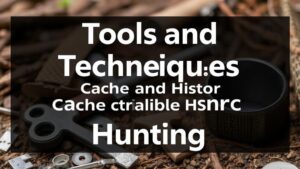How to Use Magnet Fishing in Combination With Metal Detecting for Artifact Recovery
How to Use Magnet Fishing in Combination With Metal Detecting for Artifact Recovery
The art of artifact recovery has gained considerable popularity over recent years, blending the techniques of magnet fishing and metal detecting to uncover historical treasures submerged beneath water and hidden underground. This article offers a comprehensive guide on how to effectively synergize these two methods for improved findings in artifact recovery.
Understanding Magnet Fishing and Metal Detecting
Magnet fishing and metal detecting serve different purposes in artifact recovery, yet they share an overarching objective: uncovering physical items of historical and cultural significance.
Magnet fishing involves the use of a powerful magnet attached to a rope, which is cast into bodies of water to retrieve ferrous metal objects. Common finds include tools, bikes, weapons, and lost valuables. For example, in 2021, a magnet fisherman in the United Kingdom recovered an antique World War II military helmet from a river, highlighting the potential for discovering items of significant value and history.
Metal detecting, on the other hand, employs electromagnetic induction to locate non-ferrous and ferrous metal items buried in the ground. Metal detectors vary in sensitivity and frequency, allowing users to find anything from coins to ancient relics. For example, in 2010, a metal detectorist located the famous Staffordshire Hoard, consisting of thousands of Anglo-Saxon artifacts, which is considered one of the most important archaeological discoveries in British history.
Combining Magnet Fishing and Metal Detecting
Leveraging both methods can enhance your chances of recovery significantly. Each method complements the other; where metal detecting may falter in aquatic environments, magnet fishing can yield results. On the other hand, metal detecting is indispensable in areas with terrestrial artifacts that will elude the magnetic pull.
- Hypothesizing Locations: Identify areas rich in history or activity. For example, old docks, bridges, and battlefields are fruitful locations for both methods.
- Sequential Deployment: Start with magnet fishing to clear an area underwater, then transition to metal detecting on land surrounding the same historical site.
Equipment and Techniques
When engaging in both activities, it is critical to have the right equipment that caters to both methods:
- Magnet: Use a neodymium magnet with a suitable pulling force, ideally over 500 lbs, to ensure effective recovery of larger items.
- Metal Detector: Choose a detector versatile enough to differentiate between valuable finds and junk. VLF (Very Low Frequency) detectors are popular among hobbyists for their balance of depth and discrimination abilities.
- Safety Gear: Depending on the location, consider wearing gloves, knee pads, and a life jacket if magnet fishing.
- Tools: Have necessary tools for digging and retrieving, such as trowels, scoops, and buckets for carrying finds.
Best Practices for Combined Techniques
To maximize effectiveness while combining magnet fishing with metal detecting, follow these best practices:
- Research: Investigate local historical records and maps to identify fruitful sites that underwent significant activity in the past.
- Patience and Persistence: Artifact recovery can be time-consuming. Remain patient and meticulous in your searches.
- Document Your Findings: Keep a detailed log of locations, types of finds, and methods used. This will help refine your techniques over time.
- Respect Regulations: Ensure compliance with local laws regarding the recovery and ownership of artifacts. Not all recovered items may be legally retained.
Case Studies: Successful Recoveries
Several instances highlight the successful fusion of magnet fishing and metal detecting:
- Case Study: The Thames River, UK – In recent years, hobbyists have successfully used magnet fishing to retrieve old weapons and bicycles from the Thames, and then followed up with metal detecting along the riverbanks, leading to the recovery of historic coins from the Victorian era.
- Case Study: Local Battlefields in the USA – A group of enthusiasts utilized magnet fishing to pull artillery pieces from nearby rivers. Then, they conducted metal detecting on adjacent fields, uncovering musket balls and buttons from the Civil War period.
Conclusion: Actionable Takeaways
By strategically combining magnet fishing and metal detecting, you can significantly enhance your artifact recovery endeavors. Key takeaways include:
- Always conduct thorough research to find the best locations for recovery.
- Use both techniques sequentially for comprehensive coverage of an area.
- Invest in quality equipment suited for both magnet fishing and metal detecting.
- Practice patience and adhere to local legal guidelines regarding artifact findings.
Ultimately, the fusion of magnet fishing and metal detecting will not only help you enrich your collection but also contribute to preserving history for future generations.


